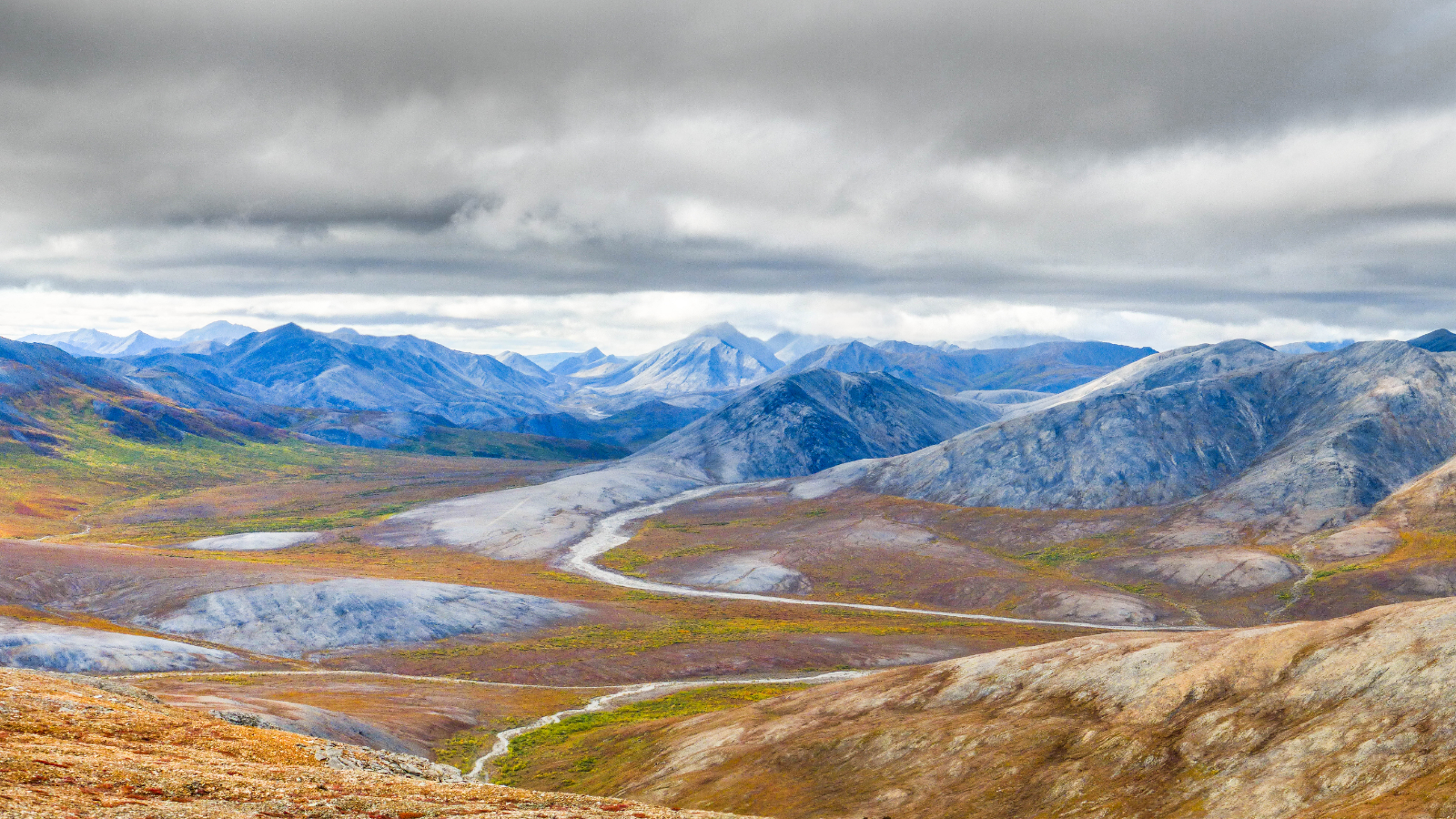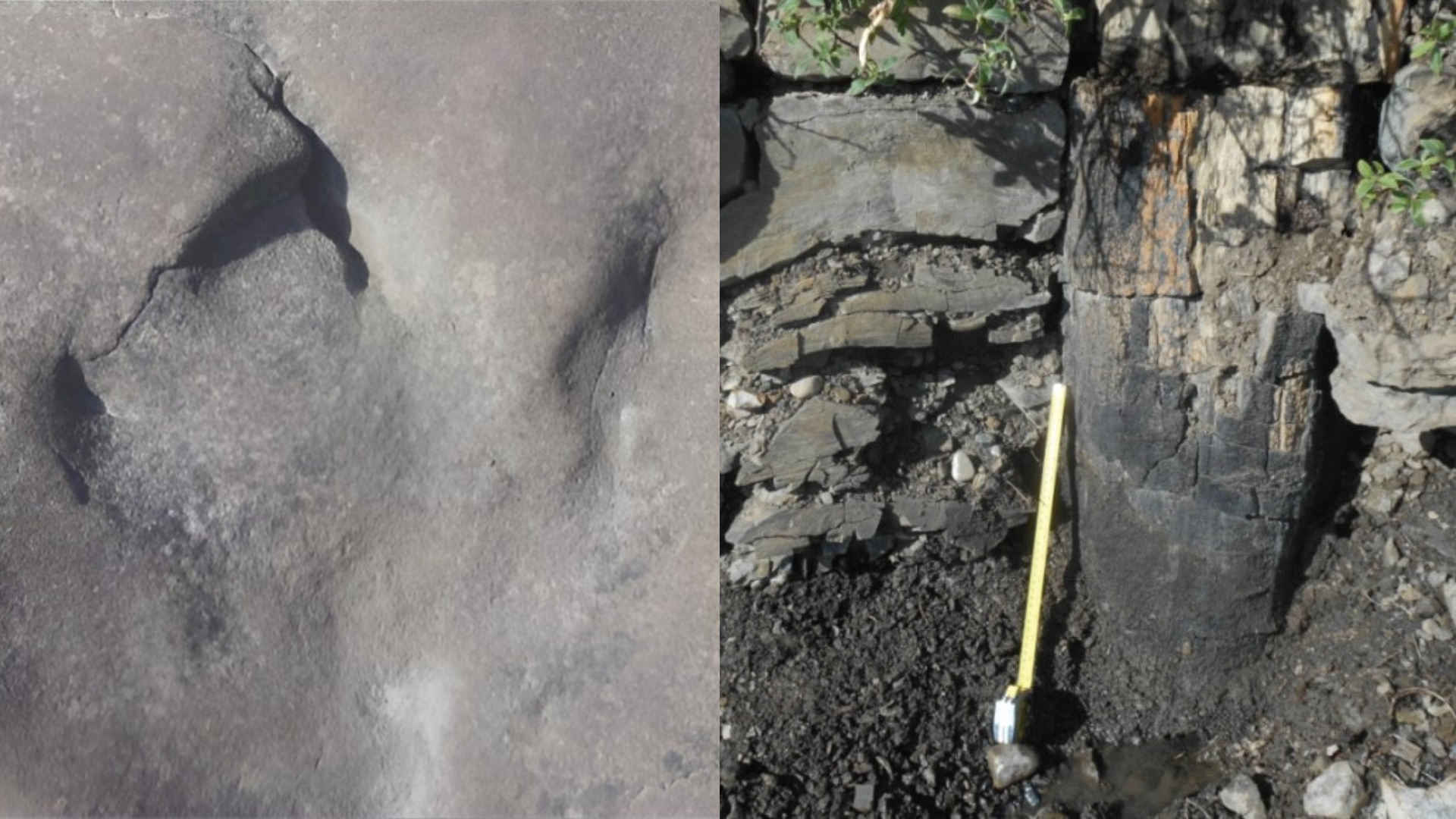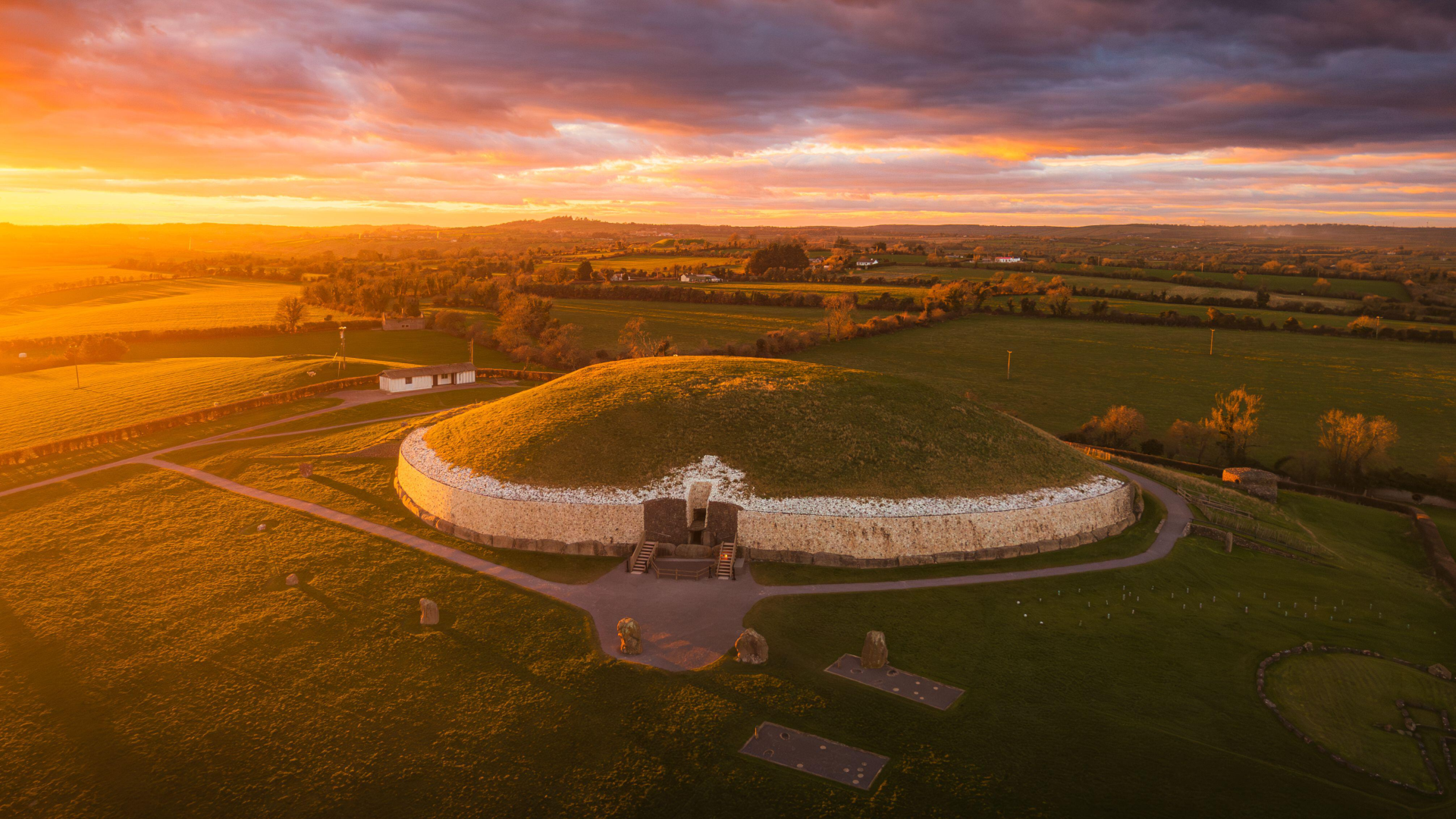Like 'walking through the woods of millions of years ago': Ancient ecosystem brimming with dinosaur tracks discovered in Alaska
Fossilized footprints, tree stumps and feces discovered in Alaskan mountain foothills is a glimpse into life on Earth 100 million years ago.

Researchers have discovered a cache of 100 million-year-old dinosaur tracks and other fossils embedded in the foothills of an Alaskan mountain range.
The fossil site, in the Nanushuk Formation beneath the De Long Mountains, provides a window into a thriving Cretaceous ecosystem populated with dinosaurs of all sizes, according to a University of Alaska Fairbanks statement released March 8.
Paleontologists examined the site between 2015 and 2017. They found 75 dinosaur tracks left by meat and plant-eating dinosaurs, though they didn't identify specific species.
"This place was just crazy rich with dinosaur footprints," lead author Anthony Fiorillo, executive director of the New Mexico Museum of Natural History and Science, said in the statement.
Related: 'Cut down in their prime': Dinosaurs were thriving in Africa before the asteroid hit
Fiorillo and his colleagues discovered the site was a preserved ancient landscape, with fossils of 2-foot-wide (60 centimeters) tree stumps, leaves, tracks and feces.
"It was just like we were walking through the woods of millions of years ago," he said.
Sign up for the Live Science daily newsletter now
Get the world’s most fascinating discoveries delivered straight to your inbox.
The researchers presented their findings in a study published Jan. 30 in the journal Geosciences.

The Nanushuk Formation is around 94 million to 113 million years old and dates to the Albian-Cenomanian Age of the Cretaceous period (145 million to 66 million years ago), according to the statement.
A majority of the tracks (59%) were left by two-legged herbivorous dinosaurs, collectively called bipedal ornithischians. This group includes animals such as helmet-headed pachycephalosaurs, which were not identified in the study. Four-legged plant eaters, or quadrupedal ornithischians, made up 17% of the tracks. Some of those belonged to ceratopsians, a group that includes the three-horned Triceratops.
The ecosystem also hosted meat-eating dinosaurs, with 9% of the tracks left by mostly carnivorous, nonavian theropods. The authors noted that some of these tracks were within the size range of Turonian theropods such as Suskityrannus, a 3-foot-tall (1 meter) tyrannosaur nicknamed "mini rex," and Timurlengia, which was about the size of a horse.
Shorebirds left the final 15% of discovered tracks. Almost half of North America's living shorebirds breed in the Arctic during the region's warm months, and the authors noted that the high frequency of extinct shorebird tracks here suggested the same thing happened in the Cretaceous.
The team also used the formation to learn more about the ancient Arctic's warm and wet climate. By calculating the mean annual precipitation from wood fragments, they found that the Arctic dinosaurs lived in a climate similar to that of modern-day South Florida.
"The temperature was much warmer than it is today, and what's possibly more interesting is that it rained a lot," Fiorillo said. "The samples we analyzed indicate it was roughly equivalent to modern-day Miami. That's pretty substantial."

Patrick Pester is the trending news writer at Live Science. His work has appeared on other science websites, such as BBC Science Focus and Scientific American. Patrick retrained as a journalist after spending his early career working in zoos and wildlife conservation. He was awarded the Master's Excellence Scholarship to study at Cardiff University where he completed a master's degree in international journalism. He also has a second master's degree in biodiversity, evolution and conservation in action from Middlesex University London. When he isn't writing news, Patrick investigates the sale of human remains.










